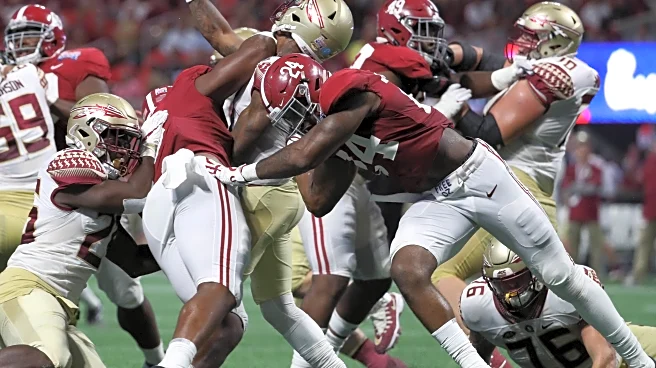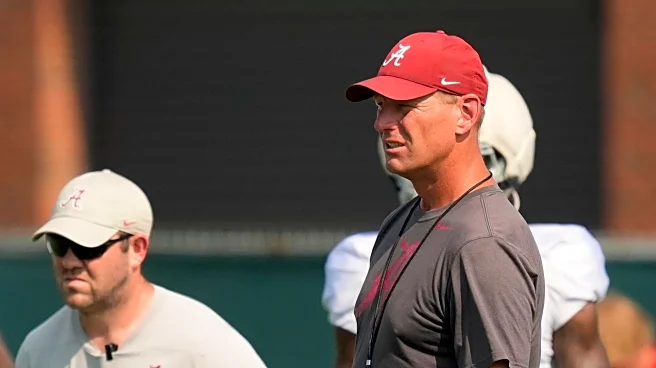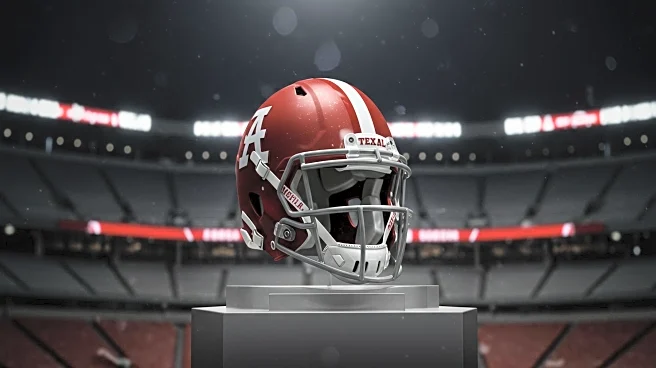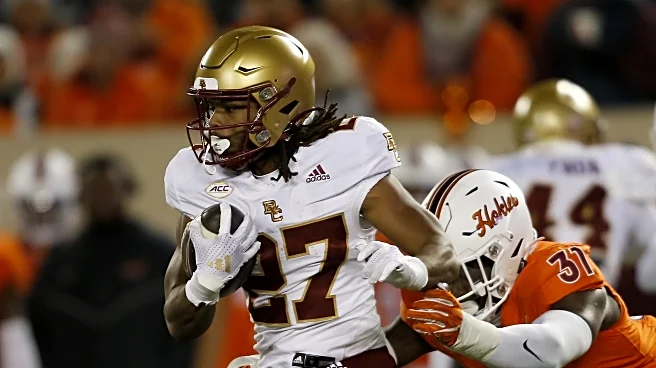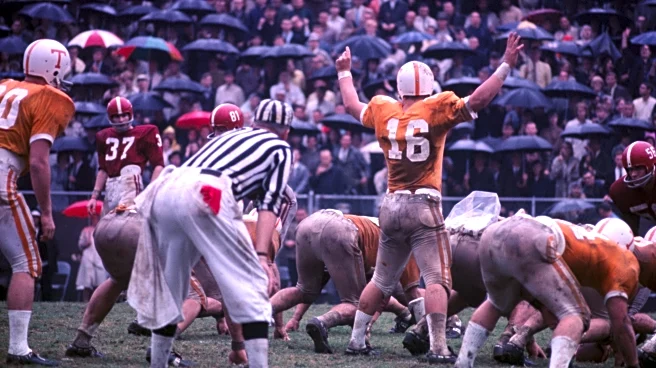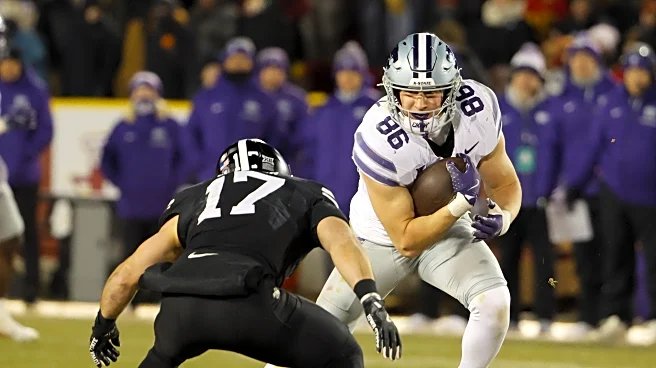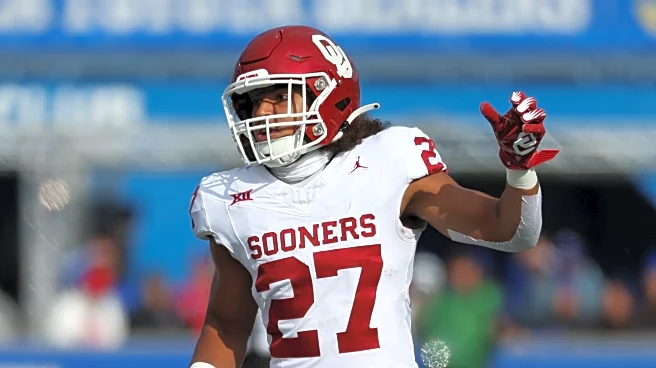
Happy Monday, everyone, and Happy Game Week! We had some college football over the weekend, headlined by a rather disgusting display from Iowa State and Kansas State, with the Cyclones coming out on top 24-21. The real action starts this week as Clemson hosts LSU and Ohio State hosts Texas. And, of course, Alabama heads down to Tallahassee.
Colin Gay took a stab at the depth chart for you.
Running back
Richard Young
Daniel Hill
Dre Washington
With Jam Miller out with a collarbone injury for an indeterminate
amount of time, DeBoer said Alabama has a “logjam” at running back. Expect Richard Young to take the bulk of responsibility, at least to start. After a strong spring and fall camp, Daniel Hill is surging for carries as well.
That position will be the most interesting at this point with Jam Miller down. All three of those guys are likely to see significant action in the game.
Nick Kelly put together a nice piece on the history between Gus Malzahn and Kane Wommack.
During the 2006 season, Arkansas, Malzahn and Kane Wommack traveled to South Carolina to face the Gamecocks. On the other side was a familiar face: then-South Carolina defensive assistant Dave Wommack.
“He was one of the best defensive coordinators in the SEC for a long time,” Malzahn said. “Wonderful person.”
Malzahn and Dave Wommack used to talk all the time before Wommack retired at the end of the 2016 season. Dave Wommack was the defensive coordinator for Ole Miss, Arkansas and several other schools during a coaching career that spanned nearly 40 years. He and Malzahn never worked together, but they called sometimes to share thoughts after games as well as information on common SEC opponents.
“I just really appreciated who he was,” Dave Wommack said. “I think he’s a great competitor and just a good man.”
Gay also has some bold predictions for you. One in particular is a recent development that we discussed last week, and should portend well for the secondary depth.
Zabien Brown makes permanent move to Alabama husky
Kane Wommack faces a conundrum with Alabama’s husky nickel defensive back. Does he use the position as its own entity, or does he use it to put the best five defensive backs on the field at one time? With the emergence of freshman Dijon Lee Jr., who Wommack already considers a “starter,” expect the Crimson Tide to use its versatility to its advantage, with Lee and Domani Jackson on the outside and Zabien Brown, who’s cross-trained at husky in fall camp, moving permanently to the inside at some point in 2025.
Chase Goodbread dove deep on shotgun snapping vs under center at the goal line.
So why are offensive coordinators so shotgun-stubborn at the goal line? Because they’re scared to go under center.
Multiple coaches cited the risk of a fumbled snap exchange as the reason they remain beholden to the shotgun. With freshman centers and quarterbacks entering college largely untrained in the under-center exchange, and offensive coordinators dedicating most practice reps to the shotgun, fumbles on under-center snaps can be commonplace in practice. And what coaches see in practice shapes game plans.
One head coach said the under-center exchange, especially in spring practice, can be “a disaster.” But is it such a big risk that play callers should abandon the under-center plays that scored 17% more often than the shotgun? When it comes to fumbles, the data says they shouldn’t be so fearful of putting their quarterbacks under center. In 72 under-center snaps from the 1-yard line last year, the 15 teams examined by USA TODAY Sports didn’t fumble even once.
The fumble risk is real, even if it didn’t happen in those 72 times. The risk is far greater if you don’t do it regularly and it’s tough to invest much of your limited practice time on those fundamentals when there is a decent chance that neither your center nor passer ever snapped under center in high school.
Goodbread also wrote about which future games might be on the chopping block after the SEC added a ninth conference game. He’s probably correct that the Mountaineers are first up.
2026: at West Virginia, home vs. Florida State. Byrne should finish out the FSU contract here, and defer the West Virginia game to … 2036? Yep, that’s the nearest year that Alabama doesn’t have any power-league opponents scheduled for non-conference play. And as Alabama’s first deferral, the Mountaineers deserve the earliest opening.
2027: home vs. West Virginia, at Ohio State. WVU probably wouldn’t be keen on a trip to Tuscaloosa a year after having its home game with the Crimson Tide pushed back. Answer: push them both back, and make that epic trip to Columbus. So, the year is 2037: West Virginia comes to T-town, Walt Maddox has been mayor for half his life, and seeks a ninth re-election.
Alabama is not giving up the return trip from the ‘Noles, and it’s hard to imagine giving up the trip to Columbus.
Some great reporting here from Max Olson at ESPN, if you wonder what elite players really cost. Spoiler: plan on spending 5-10% of your cap on the quarterback. But there is much more in here.
“I think anything below $750,000 for a starting running back at a serious program would be disrespectful, basically,” one agent argued.
Another agent pointed to Quinshon Judkins as proof that some teams will be willing to go up to seven figures for a top-tier No. 1 back. But Judkins’ move from Ole Miss to Ohio State last year looks more like a rare exception to the rule than a deal that resets the market at the position.
The opinions from recruiting staffers, including those at programs that shopped for portal running backs this offseason, were all over the place. One SEC GM said they’d expect a good Power 4 starting back to cost a minimum of $250,000. A DPP in the Big 12 said his program wouldn’t spend more than $300,000 on one. Others suspect the range is somewhere between $300,000 and $500,000. Most surveyed struggled with the idea of paying a back $500,000 or more unless he’s special.
“Anything more than that, I think you’re overvaluing the position, honestly,” an ACC DPP said.
Anyone surprised that Big 12 and ACC schools don’t see the value in a running back? That first line in the quoted excerpt is part of the problem in college football nowadays. When you pay a dude $750k to come in and run the ball, there isn’t much of a camp competition for that position.
Last, for those of us old enough to remember the 90s, imagine being a football fan in that era and thinking that the state of Florida would go a decade without so much as playing for a national championship. That’s where we are today.
SEC Network analyst and former Gators standout receiver Chris Doering recently told the Tampa Bay Times, “It’s been a downward spiral,” when asked about the state’s football programs.
And it’s gotten the attention of Gov. Ron DeSantis, who said of the state’s programs about a year ago, “We just need them to be No. 1 in football again.”
DeSantis did claim a political victory in 2024 when it came to the state’s football programs. After FSU and Miami beat California, he said: “Whatever they say about the state of Florida, we say we are still winning the war on woke.”
Yeah, I don’t think that really satisfies all those frustrated Hurricanes, Seminoles and Gators when it comes to their football programs.
Of course, Nole Fan Hear thinks they won the title in 2023, but that’s another discussion.
That’s about it for today. Have a great week.
Roll Tide.
